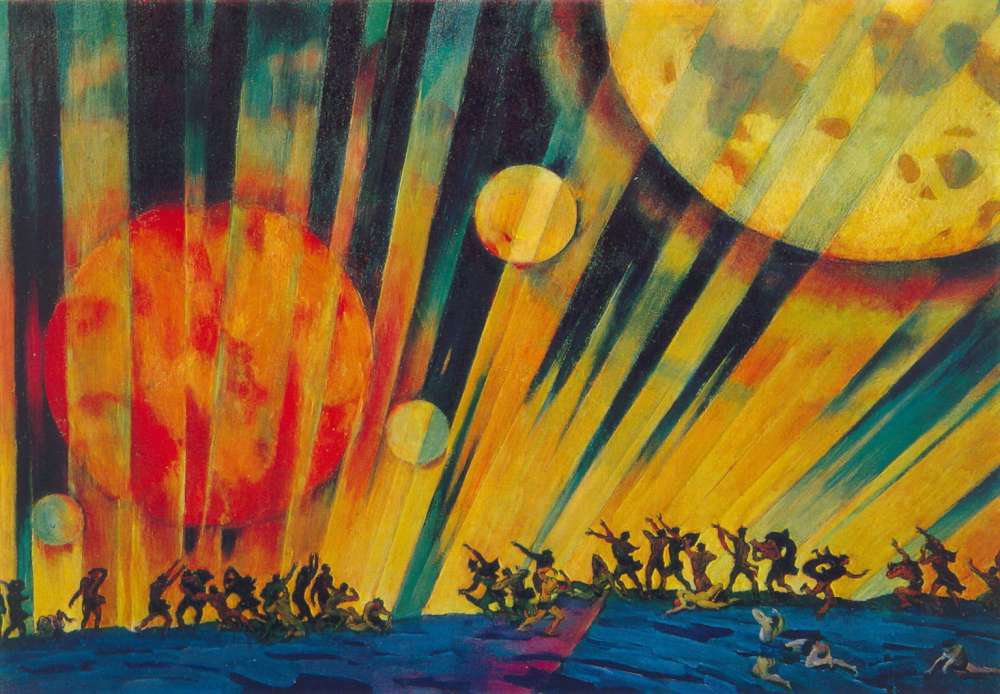1921
The New Planet
author
Konstantin Yuon
description
Mediums: tempera, cardboard.
Location: The State Tretyakov Gallery, Moscow (Russia).
The symbolic canvas became the artist’s “by-product” when he was creating the curtain for the stage of the Bolshoi Theater. The sketches were called “unsuitable,” and the artist created an easel painting from them. Soviet art, unambiguous in its interpretation, defined the work glowing with heat as the pathetic and monumental glorification of the birth of the country of the Soviets, equated in a fantasy creation with the ascent of a new light. In the modern presentation, it is mostly regarded as an image of a global catastrophe, since people reaching for a fiery ball are falling, possibly dying. Some run or crawl away into the hard, lifeless space. Significantly, I. Shmelev reproduced this picture on the cover of the “Sun of the Dead” describing the Crimean Red Terror. The view of the plot as a myth of primordial creation is not without foundation, given that the people are either naked or in clothes made of animal skins. All the stylistics, in any case, is far from joyful but tells of a universal cataclysm.
